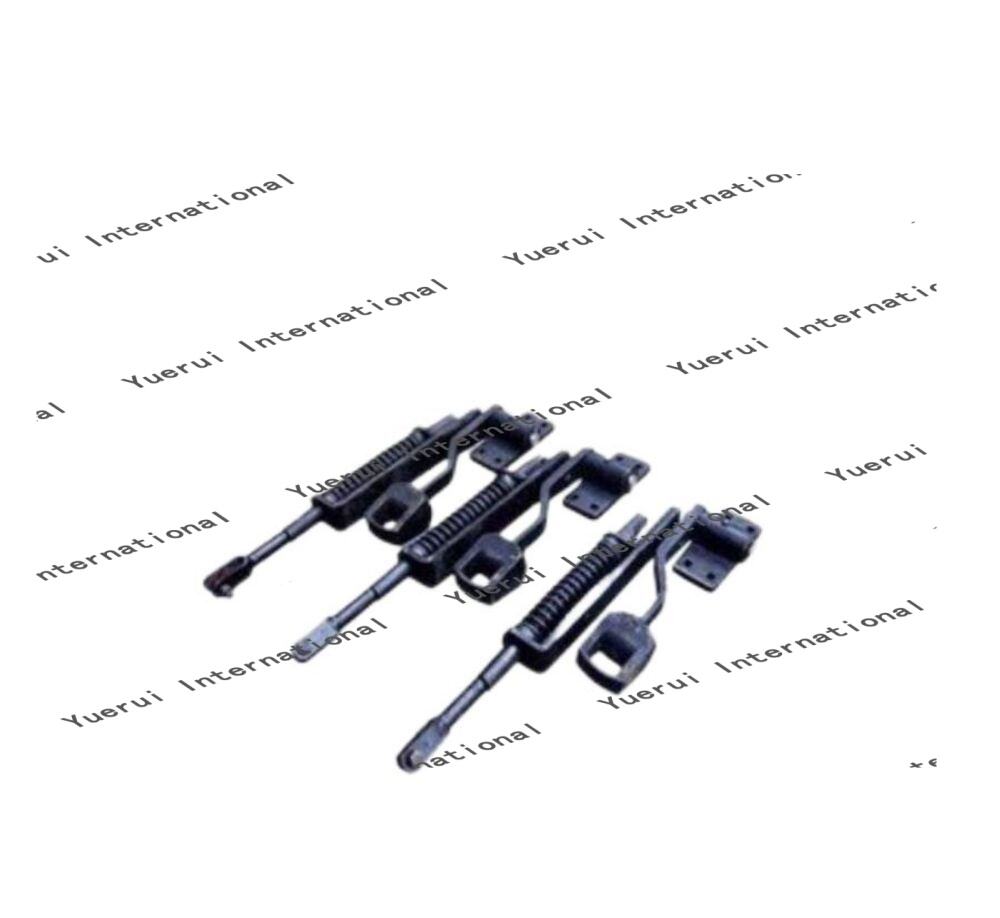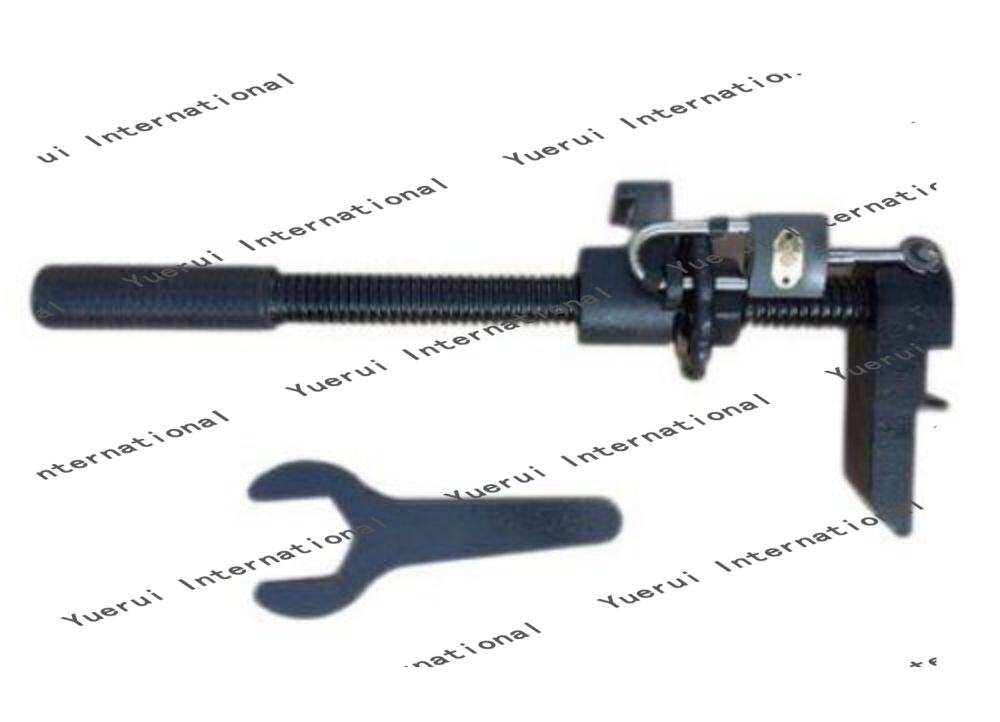Transformación de las Operaciones Ferroviarias a Través de Tecnología Avanzada
La industria ferroviaria se encuentra al borde de una transformación revolucionaria, con equipos ferroviarios modernos que equipo ferroviario redefiniendo cómo funcionan los trenes, se realiza el mantenimiento y se atiende a los pasajeros. Esta evolución tecnológica representa un avance significativo con respecto a los sistemas ferroviarios tradicionales, prometiendo una mayor eficiencia, costos reducidos y una mejora en la fiabilidad del servicio. A medida que las redes ferroviarias de todo el mundo enfrentan una presión creciente para optimizar sus operaciones, la integración de equipos de vanguardia se ha convertido no solo en una ventaja, sino en una necesidad para sobrevivir en el competitivo sector del transporte.
El impacto de los equipos ferroviarios modernos va mucho más allá de simples mejoras mecánicas. Los sistemas ferroviarios actuales incorporan tecnologías digitales sofisticadas, sistemas automatizados y sensores inteligentes que trabajan en conjunto para crear una red de transporte inteligente. Estos avances están cambiando fundamentalmente la forma en que los operadores ferroviarios abordan desde las operaciones diarias hasta la planificación estratégica a largo plazo, estableciendo nuevos estándares de excelencia operativa en la industria.
Infraestructura Digital y Sistemas Inteligentes
Sistemas Avanzados de Señalización
Los equipos ferroviarios modernos incluyen actualmente sistemas de señalización de última generación que mejoran significativamente la utilización de las vías y la seguridad. El Sistema Europeo de Control de Trenes (ETCS) y el Control de Trenes Basado en Comunicaciones (CBTC) representan la cúspide de la tecnología moderna de señalización. Estos sistemas permiten que los trenes circulen más cerca unos de otros manteniendo una seguridad absoluta, aumentando efectivamente la capacidad de la línea sin necesidad de vías adicionales.
Los sistemas de señalización inteligentes se adaptan a las condiciones en tiempo real, optimizando el movimiento de los trenes en función del tráfico actual y las posibles incidencias. Esta capacidad de respuesta dinámica garantiza la fluidez del tráfico y reduce el efecto dominó de los retrasos, mejorando así la eficiencia general de la red.
Monitoreo Inteligente de Vías
La implementación de equipos ferroviarios modernos equipados con sensores permite un monitoreo continuo de la vía y la detección temprana de posibles problemas. Estos sensores sofisticados miden en tiempo real la geometría de la vía, el desgaste del riel y otros parámetros críticos, posibilitando estrategias de mantenimiento predictivo que evitan fallos costosos e interrupciones del servicio.
Algoritmos de aprendizaje automático procesan estos datos para identificar patrones y predecir cuándo será necesario realizar mantenimiento, lo que permite a los operadores programar reparaciones durante horas de baja demanda y minimizar las interrupciones del servicio. Este enfoque proactivo reduce significativamente los costos de mantenimiento, al tiempo que mejora la fiabilidad y seguridad de la vía.
Innovaciones en Material Rodante
Locomotoras de Bajo Consumo Energético
El último equipamiento ferroviario moderno incluye locomotoras diseñadas con la eficiencia energética como su núcleo. Estos motores de nueva generación incorporan sistemas de frenado regenerativo, gestión avanzada de la potencia y diseños aerodinámicos que reducen significativamente el consumo de energía. Algunos modelos pueden recuperar hasta un 30% de la energía utilizada durante el frenado, que puede ser devuelta a la red eléctrica o utilizada por otros trenes.
Las locomotoras híbridas y eléctricas representan otro avance significativo en la tecnología del material rodante. Estas alternativas respetuosas con el medio ambiente no sólo reducen los costes operativos, sino que también ayudan a los operadores ferroviarios a cumplir con las normas medioambientales cada vez más estrictas, manteniendo al mismo tiempo altos estándares de rendimiento.
Coches de pasajeros inteligentes
Los equipos ferroviarios modernos se extienden a los coches de pasajeros, que ahora incorporan sistemas inteligentes que mejoran tanto la comodidad como la eficiencia. Los sistemas automatizados de puertas, las pantallas dinámicas de información para pasajeros y los sistemas inteligentes de control climático trabajan conjuntamente para mejorar la experiencia del pasajero mientras optimizan el consumo de energía.
Estos coches inteligentes también incorporan sensores de peso y sistemas de conteo de pasajeros, lo que permite a los operadores ajustar la composición del tren según los patrones reales de uso. Este enfoque basado en datos ayuda a optimizar la capacidad y reducir el consumo innecesario de energía al evitar circular con coches infrautilizados.

Tecnologías de mantenimiento e inspección
Sistemas de Inspección Automatizados
La integración de equipos ferroviarios modernos en las operaciones de mantenimiento ha revolucionado la forma en que se realizan las inspecciones. Los sistemas automatizados que utilizan cámaras de alta velocidad, escaneo láser y pruebas ultrasónicas pueden inspeccionar vías, ruedas y otros componentes críticos mientras los trenes están en servicio regular, eliminando la necesidad de realizar recorridos dedicados exclusivamente a inspección.
Estos sistemas pueden detectar defectos microscópicos que serían imposibles de identificar únicamente mediante inspección visual, lo que permite a los equipos de mantenimiento abordar posibles problemas antes de que se conviertan en fallos graves. Esta capacidad reduce significativamente el riesgo de fallas en el equipo y las interrupciones de servicio asociadas.
Equipos robóticos de mantenimiento
Los equipos ferroviarios modernos incluyen ahora sistemas robóticos sofisticados para tareas de mantenimiento. Estos robots pueden realizar tareas peligrosas o repetitivas con mayor precisión y consistencia que los trabajadores humanos, mejorando tanto la seguridad como la eficiencia. Desde sistemas automatizados de rectificado de vías hasta soldadura robótica, estas tecnologías están transformando la forma en que se realiza el trabajo de mantenimiento.
El uso de sistemas robóticos también permite realizar trabajos de mantenimiento durante las horas normales de servicio en muchos casos, ya que pueden operar de forma segura en las proximidades de trenes en marcha. Esta flexibilidad en la programación del mantenimiento ayuda a maximizar la disponibilidad de la vía y reducir las interrupciones de servicio relacionadas con el mantenimiento.
Sistemas de Control y Comunicación
Centros de operaciones integrados
El equipamiento ferroviario moderno incluye tecnologías avanzadas de centros de control que proporcionan a los operadores una visibilidad completa en tiempo real de toda su red. Estos sistemas integran datos de múltiples fuentes, incluidos trenes, señales y estaciones meteorológicas, para proporcionar a los operadores información procesable para una toma de decisiones óptima.
Los algoritmos de inteligencia artificial y aprendizaje automático ayudan a predecir y prevenir posibles interrupciones, mientras que los sistemas automatizados de apoyo a la decisión ayudan a los operadores a gestionar situaciones complejas. Este nivel de integración y automatización garantiza operaciones más coherentes y eficientes en toda la red.
Redes de Comunicación Mejoradas
Los equipos ferroviarios modernos más recientes dependen de redes de comunicación robustas que permiten un intercambio de datos fluido entre todos los componentes del sistema. Redes inalámbricas de alta velocidad, incluida la tecnología 5G, proporcionan la base para la comunicación en tiempo real entre trenes, equipos laterales de vía y centros de control.
Estos sistemas avanzados de comunicación respaldan funciones como el monitoreo y control remoto de los sistemas del tren, actualizaciones en tiempo real de información para pasajeros y una mejora en el monitoreo de seguridad. El resultado es un sistema ferroviario más ágil y eficiente, capaz de adaptarse rápidamente a condiciones cambiantes.
Tendencias Futuras en Tecnología Ferroviaria
Operaciones Autónomas
El futuro de los equipos ferroviarios modernos apunta hacia un mayor grado de autonomía en las operaciones de trenes. Aunque ya existen trenes completamente autónomos operando en algunos sistemas cerrados, la tecnología avanza hacia una implementación más amplia en redes ferroviarias convencionales. Esta evolución promete mayores mejoras en eficiencia mediante perfiles optimizados de aceleración y frenado, reducción del consumo de energía y una operación más consistente.
El desarrollo de sistemas autónomos también incluye las operaciones en patios, donde locomotoras autónomas y equipos robóticos pueden realizar tareas de maniobras y mantenimiento con mayor eficiencia y seguridad que los métodos tradicionales.
Integración con Internet de las Cosas
La creciente integración de dispositivos IoT en equipos ferroviarios modernos está creando nuevas oportunidades para mejorar la eficiencia. Desde sensores inteligentes en vías y trenes hasta sistemas conectados de información para pasajeros, el ecosistema ferroviario de IoT se está volviendo cada vez más sofisticado. Esta conectividad permite un monitoreo y control más preciso de las operaciones ferroviarias, al tiempo que genera datos valiosos para optimizaciones futuras.
La combinación de la tecnología IoT con computación en el borde y inteligencia artificial está abriendo nuevas posibilidades para el mantenimiento predictivo, la optimización en tiempo real y servicios mejorados para pasajeros, sentando las bases para mayores mejoras de eficiencia en el futuro.
Preguntas Frecuentes
¿Cómo contribuye el equipo ferroviario moderno a la eficiencia energética?
Los equipos ferroviarios modernos incorporan diversas tecnologías de ahorro de energía, incluidos sistemas de frenado regenerativo, diseños aerodinámicos y sistemas inteligentes de gestión de energía. Estas características pueden reducir el consumo de energía hasta un 30 % en comparación con los equipos tradicionales, manteniendo o mejorando los niveles de rendimiento.
¿Qué papel juega la inteligencia artificial en las operaciones ferroviarias modernas?
La IA es fundamental en los equipos ferroviarios modernos, impulsando sistemas de mantenimiento predictivo, optimizando horarios de trenes y mejorando la toma de decisiones operativas. Procesa grandes cantidades de datos procedentes de diversos sensores y sistemas para predecir posibles problemas, optimizar el uso de la energía y mejorar la eficiencia general del sistema.
¿Cómo mejora el equipo ferroviario moderno los estándares de seguridad?
Los equipos ferroviarios modernos mejoran la seguridad mediante sistemas avanzados de señalización, capacidades automatizadas de monitoreo e inspección y sistemas de control inteligentes. Estas tecnologías trabajan en conjunto para prevenir accidentes, detectar peligros potenciales de forma temprana y garantizar el cumplimiento constante de los protocolos de seguridad.
Tabla de Contenido
- Transformación de las Operaciones Ferroviarias a Través de Tecnología Avanzada
- Infraestructura Digital y Sistemas Inteligentes
- Innovaciones en Material Rodante
- Tecnologías de mantenimiento e inspección
- Sistemas de Control y Comunicación
- Tendencias Futuras en Tecnología Ferroviaria
- Preguntas Frecuentes

